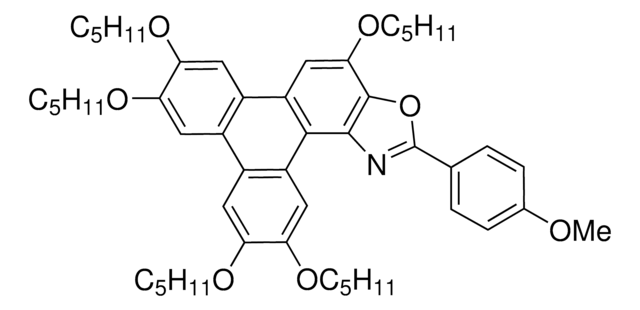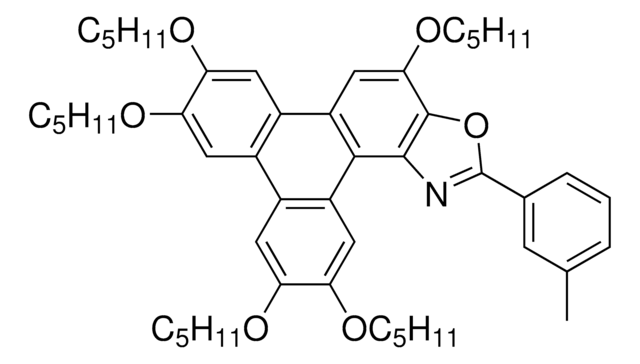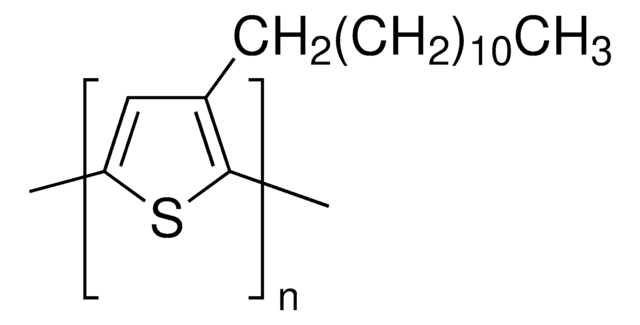Wichtige Dokumente
922994
TpOx-2-An
Synonym(e):
8-(Anthracen-2-yl)-2,3,6,11,12-pentakis(pentyloxy)triphenyleno[1,2-d]oxazole
About This Item
Empfohlene Produkte
Lagertemp.
−20°C
Qualitätsniveau
SMILES String
CCCCCOC1=CC(C(C=C(OCCCCC)C(OCCCCC)=C2)=C2C3=C4C=C(OCCCCC)C5=C3N=C(C6=CC=C(C=C(C=CC=C7)C7=C8)C8=C6)O
Verwandte Kategorien
Allgemeine Beschreibung
Anwendung
- Fluorescent dye staining
- Organic semiconductor for organic electronic and photonic applications
- Multi-photon microscopy
Lagerung und Haltbarkeit
Lagerklassenschlüssel
11 - Combustible Solids
WGK
WGK 3
Hier finden Sie alle aktuellen Versionen:
Analysenzertifikate (COA)
It looks like we've run into a problem, but you can still download Certificates of Analysis from our Dokumente section.
Wenn Sie Hilfe benötigen, wenden Sie sich bitte an Kundensupport
Besitzen Sie dieses Produkt bereits?
In der Dokumentenbibliothek finden Sie die Dokumentation zu den Produkten, die Sie kürzlich erworben haben.
Unser Team von Wissenschaftlern verfügt über Erfahrung in allen Forschungsbereichen einschließlich Life Science, Materialwissenschaften, chemischer Synthese, Chromatographie, Analytik und vielen mehr..
Setzen Sie sich mit dem technischen Dienst in Verbindung.








